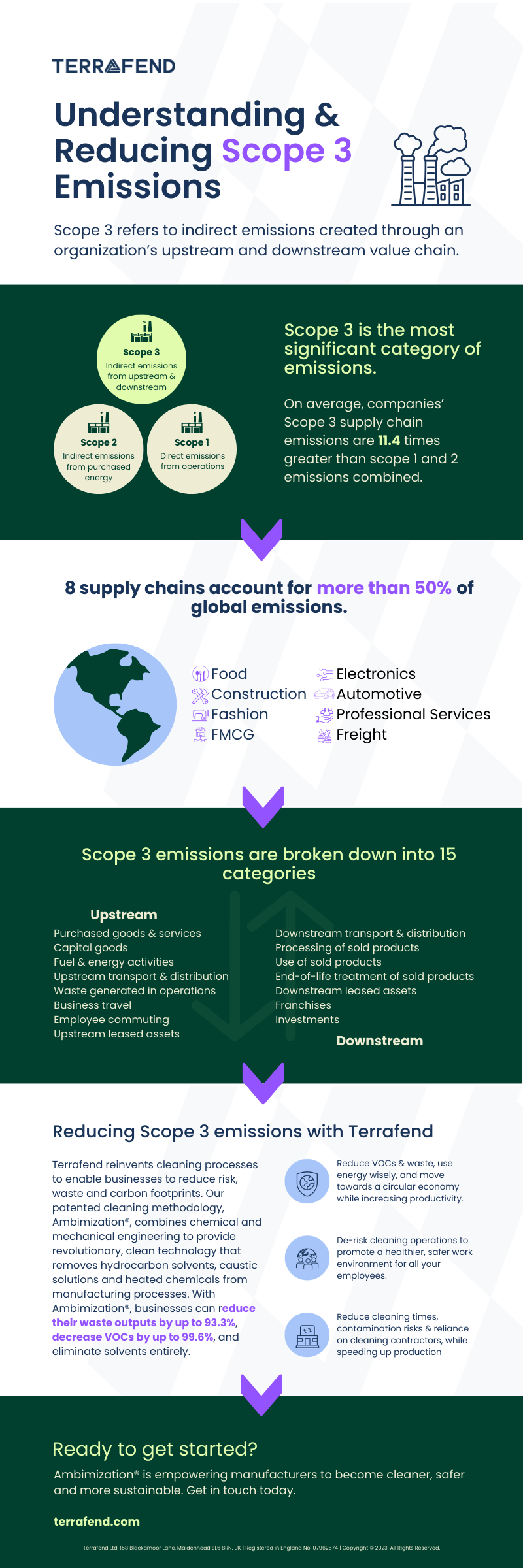Understanding & Reducing Scope 3 Emissions
Until now, many companies have primarily focused on monitoring and measuring scope 1 and scope 2 emissions. However, as these companies delve deeper into their data, they often discover that the majority of their greenhouse gas impact actually stems from their value chain. In fact, on average, scope 3 emissions contribute a staggering 80% to a company's overall greenhouse gas emissions.
This percentage can be even higher for businesses within the automotive and paint & coatings industries. Knowing the difference between scope 1, 2, and 3 emissions, how they are calculated, and why it’s important to track them is just the beginning. You also need to make sure you have the right systems in place to monitor and measure your company’s emissions effectively, no matter where they come from.
What are scope 1, 2, and 3 emissions?
Greenhouse gas emissions are categorized into different types, or “scopes”, based on their source. These scopes come from the Greenhouse Gas Protocol (GHGP), which was first published in 2001 by the World Resources Institute (WRI) and the World Business Council for Sustainable Development (WBCSD).
Scope 1 emissions are greenhouse gas emissions that your company makes directly — for example, while operating company vehicles or running furnaces, pumps, and boilers. Scope 1 emissions come from sources directly owned or controlled or by your business. For this reason, scope 1 emissions are sometimes called direct emissions.
Scope 2 emissions are those that your company makes indirectly from electricity and other power purchases — for example, when it buys electricity to heat and cool its facilities. Generating this energy produces greenhouse gas emissions like carbon dioxide and methane. Even though these emissions are not produced directly at your company’s facility, the activities that use the purchased energy indirectly cause greenhouse gas emissions. For this reason, scope 2 emissions are sometimes called indirect emissions.
Scope 3 emissions include other indirect emissions that are created not by the company’s own operations, but within its wider value chain. This includes emissions from things like corporate travel, employee commuting, purchased goods and services, waste disposal, and transportation and distribution of its products. Scope 3 emissions can make up a huge proportion of your company’s overall emissions footprint — but they are also the most difficult to accurately quantify.
Examples of Scope 3 emissions include:
- Emissions from purchased goods and services (e.g., raw materials, components)
- Emissions from outsourced activities (e.g., manufacturing, transportation)
- Emissions from the use of products or services (e.g., use of a company’s products by customers)
The infographic below gives an overview of Scope 3 emissions and how Ambimization® is helping manufacturers reduce them.

Interested in learning more about Scope 3 Emissions and Ambimization®?
We're excited to sponsor the upcoming British Coatings Federation Road to Net Zero seminar and look forward to seeing some of our customers and the larger UK coatings community on Tuesday 14th November at the Hilton Nottingham-Gateway. Make sure to book your place if you haven't already!
